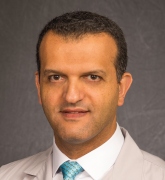Delineating the durability outcome differences after saphenous ablation with laser versus radiofrequency. Journal Article
Local Library Link: Find It @ Loyola
| Authors: | Yoon, WJ; Dresher, M; Crisostomo, PR; Halandras, PM; Bechara, CF; Aulivola, B |
| Article Title: | Delineating the durability outcome differences after saphenous ablation with laser versus radiofrequency. |
| Abstract: | OBJECTIVE: The mechanism of delivering thermal energy to the vein wall differs between endovenous laser ablation (EVLA) and radiofrequency ablation (RFA). Different mechanisms of ablation may have different effects on the durability of these procedures typically performed for saphenous vein insufficiency. Whether there is a difference in long-term durability outcomes between these two techniques remains uncertain. This study aimed to delineate the durability outcome differences in terms of recurrence rate and pattern. METHODS: A retrospective review identified 270 consecutive patients who underwent saphenous ablation using EVLA or RFA between July 2013 and October 2016. The primary end points were clinical symptom recurrence and anatomic recurrence of reflux. RESULTS: Overall, 343 limbs were included in the study; 246 limbs (183 patients) underwent EVLA and 97 limbs (87 patients) underwent RFA. The mean follow-up time was 112 days for EVLA (range, 2-1153 days) and 106 days for RFA (range, 3-735 days; P = .786). No significant differences were observed between the groups with respect to demographic data, Clinical, Etiological, Anatomical, Pathophysiological classification, or ratio of great saphenous vein to small saphenous vein treated. The mean time to recurrence of symptoms was 219 days longer with EVLA (n = 8; mean, 774 days; range, 187-1042 days) than RFA (n = 4; mean 555 days; range, 341-616 days). Kaplan-Meier estimates for 1- and 3-year freedom from clinical recurrence were 100% and 96% for EVLA and 97% and 93% for RFA, respectively. There was no difference between the two groups (log rank, P = .0666). In cases with recurrent reflux documented on duplex (four in the EVLA group and three in the RFA group), the thigh segment was the most frequently involved site (75% in EVLA, 67% in RFA). Same site recanalization was significantly less frequent in EVLA (0.82% in EVLA vs 2.06% in RFA; P = .0388). New areas of reflux developed at a similar rate between the groups, in 0.82% of EVLA limbs in the anterior accessory saphenous vein and the calf great saphenous vein, and in 1.03% of RFA limbs in the anterior accessory saphenous vein (P = .8436). CONCLUSIONS: The results of our study suggest that the outcomes of EVLA and RFA performed for saphenous vein insufficiency may differ in the long term. The clinical recurrence rates are similar, but the anatomic recurrence patterns may differ, with more frequent treated site recurrence in the RFA group. |
| Journal Title: | Journal of vascular surgery. Venous and lymphatic disorders |
| Publisher: | Unknown |
| Date Published: | 2019 |
LUC Authors
-
 35
35Aulivola -
 12
12Crisostomo -
 24
24Halandras -
 37
37Bechara
Related LUC Article
